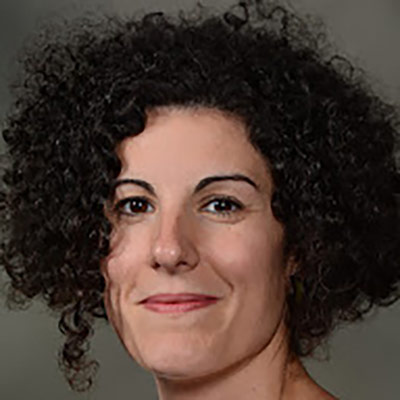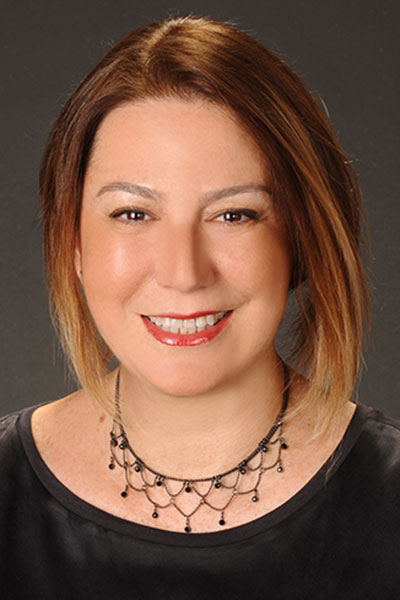Clinicians treating sleep-disordered breathing in children face numerous challenges, including diagnostic dilemmas and determining when to initiate therapy, as well as unique adherence challenges to mainstay treatment.
The session, Critical Updates in Pediatric Sleep-Disordered Breathing, on Monday, October 9, featured a panel of experts who discussed the challenges in diagnosing sleep-disordered breathing in pediatric patients, the growing utilization of novel therapies, and the increasing opportunity to use advanced technologies to optimize treatment.
Diagnosing sleep-disordered breathing

Maria Castro-Codesal, MD, PhD, Associate Professor in the Department of Pediatrics at the University of Alberta, opened the session with a review of current options for diagnosing sleep-disordered breathing in children and evolving criteria and guidelines on pediatric indications for therapy.
“[Patient] questionnaires and overnight oximetry seem sufficient to diagnose obstructive sleep apnea (OSA) in [patients who experience uncomplicated habitual snoring] prior to adenotonsillectomy; now, if there are comorbidities or patients who are less than 2 years of age, further testing might be necessary,” Dr. Castro-Codesal said.
It is less clear when to initiate positive airway pressure (PAP) therapy for these patients, but she said that symptomology is still the guiding principle.
“There is more evidence supporting that if you have symptoms and there is any kind of objective diagnostic testing that includes PCO2 monitoring, PAP therapy might be required,” she said. “There is also a rising body of literature suggesting that metabolic markers might be useful in monitoring PAP effectiveness.”
Treating persistent OSA

Refika Ersu, MD, Professor at the University of Ottawa and Director of the Sleep Laboratory and Home Ventilation Program at Children’s Hospital of Eastern Ontario, discussed current treatment options and the importance of a personalized approach to managing persistent OSA in children.
“The current treatment approach to children with OSA includes, as a first step, adenotonsillectomy in otherwise healthy children, but also children with obesity or other underlying complexity, such as Down syndrome,” Dr. Ersu said.
OSA, however, is a heterogeneous disorder, she noted, and a “one-size-fits-all” approach is no longer valid.
“Although current treatment options for persistent OSA in children are limited, with low efficacy and adherence, many new therapeutic strategies are in the pipeline,” she said. “And I just want to remind you, patient preferences and shared decision-making with families and children, for therapy, should be part of any personalized medicine approach.”
PAP therapy adherence

Rakesh Bhattacharjee, MD, Associate Professor in the Division of Respiratory Medicine and Chief of the Section of Sleep Medicine at the University of California, San Diego, talked about the challenge of PAP adherence in children and strategies to improve it.
“The definition of adherence is really based on [adults who use PAP]—this is CMS/Medicare criteria that you need to wear your PAP device for 4 hours or more for 70% of nights over a 30-day period, typically in the first 90 nights,” Dr. Bhattacharjee said. “It’s very specific, but this is what we’ve been using in the United States with regards to making decisions about continuing or withdrawing PAP therapy. But guess what, there is really no definition in pediatrics.”
There is a lack of studies looking at positive and negative factors associated with PAP adherence in children, he said, and the limited literature that is currently available is mainly based on case descriptions and anecdotal information.
“PAP adherence in children is quite variable,” he said. “Regular monitoring of [PAP device download data] can help troubleshoot and potentially optimize adherence. And I firmly believe that if we can be more scientific about offering behavioral therapy, that perhaps that would be the route to improve adherence.”
Hypoventilation management challenges

Iris A. Perez, MD, Associate Professor of Clinical Pediatrics at Keck School of Medicine of USC and Director of the Congenital Central Hypoventilation Syndrome and Diaphragm Pacing Program at Children’s Hospital Los Angeles, concluded the session with a discussion of the management challenges associated with congenital central hypoventilation syndrome (CCHS).
“Different phenotypes can actually impact our decisions about treatment options, as well as management plans,” Dr. Perez said, reiterating the need for an individualized and personalized approach.
Hypoventilation may not be the initial presentation; therefore, in these patients, she said, it’s important to continue with surveillance polysomnography, including CO2 monitoring to assess for the development of hypoventilation.
“OSA may be the initial presentation and may actually obscure the diagnosis of CCHS and may delay identification of these patients,” she said. “And it is important, because CCHS has an autosomal-dominant pattern of inheritance, to pursue comprehensive genetic testing, not only on the patient but also on family members.”
Join us at CHEST 2025
Save the date for the next Annual Meeting, October 19 to 22, 2025, in Chicago. CHEST 2025 will explore the latest advancements in pulmonary, critical care, and sleep medicine, with a focus on innovation and the future, just as the city itself embodies progress and reinvention.





